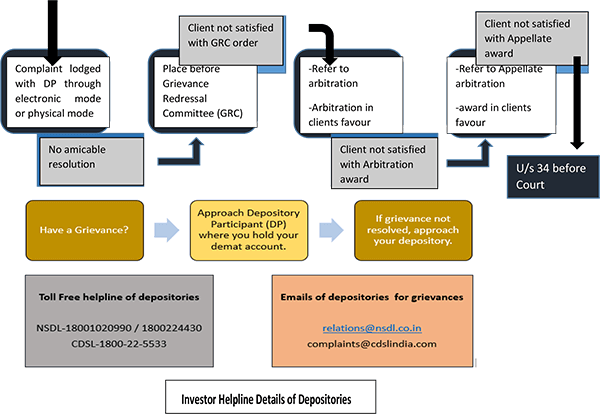New Fund Offers (NFOs) are novel investment opportunities offered by Asset Management Companies (AMCs) to garner capital from investors, facilitating investment across diverse securities such as equities, bonds, and other financial instruments. In this article, we will delve into comprehensive insights related to Mutual Fund NFOs.
Understanding Mutual Fund NFOs:
A mutual fund NFO is a newly introduced fund offer initiated by an AMC for the first time. It introduces a new investment scheme accessible for subscription over a limited timeframe.
Mutual Fund NFOs can either be equity-focused, debt-focused or a blend of both investment strategies. Investing in NFO funds involves purchasing mutual fund units of the scheme during the stipulated subscription duration.
An Asset Management Company (AMC) introduces mutual fund NFO with the primary goal of attracting capital from investors for deployment across diverse market instruments.
By developing a new scheme with a defined investment objective, AMCs aim to address prevailing market conditions effectively. The subscription window for a Mutual Fund NFO is usually restricted to a finite duration, following which the scheme ceases to accept new investments.
Are Mutual Fund NFOs the same as Company IPOs?
While there’s a common misconception that Initial Public Offerings (IPOs) and mutual fund New Fund Offers (NFOs) are identical, there are notable distinctions between the two. Unlike IPOs, NFOs are priced at a fixed rate per unit, typically at Rs 10, and don’t operate on the principle of supply and demand dynamics.
Fund managers have the liberty to issue the required number of units as they see fit, without affecting the price, even in response to increased demand. Conversely, following the subscription period, an IPO’s price in the market is subject to fluctuation based on demand.
Mutual fund NFOs and Company IPOs are distinct concepts with varying characteristics.
- Purpose:
Mutual fund companies introduce NFOs to unveil new investment schemes, whereas IPOs involve companies offering shares to attain listing on stock exchanges. - Pricing Dynamics:
In an IPO, share prices are determined by market demand and supply, unlike NFOs where NAV remains unaffected by demand and supply. IPO pricing holds significant importance, whereas NAV value is of minimal concern. - Objectives:
The objective of a mutual fund NFO revolves around the scheme’s specific investment objectives and strategy, whereas an IPO aims to secure capital for the company’s expansion and growth. - Investor Quotas:
IPOs typically allocate quotas for various investor categories such as retail investors, Non-Institutional Investors (NIIs), and Qualified Institutional Buyers (QIBs). In contrast, NFOs do not entail such quotas or associated benefits.
What are the different types of NFOs?
New Fund Offers (NFOs) can be categorised into three types based on their investment structure and characteristics. Let’s explore each of them:
- Open-Ended Mutual Funds:
Open-ended Mutual funds offer investors the flexibility to invest in or redeem their holdings at any time. Investors are typically allowed to enter or exit the scheme as per their preference at the prevailing Net Asset Value (NAV), and they may also be subject to exit loads, if applicable, even after the initial NFO period concludes. - Closed-Ended Funds:
Designed to accumulate a pool of funds for investment in securities, closed-ended funds prohibit new transactions once the fund reaches its predetermined maturity term. However, fund companies list these closed-ended funds on stock exchanges, enabling investors to trade units on the exchange should they choose to exit the scheme. - Interval Funds:
Interval funds combine features of both open-end and closed-end funds. These NFO funds offer specific periodic intervals, such as quarterly or semi-annually, during which investors can buy or sell shares. Beyond these designated intervals, the fund typically restricts redemptions, thereby facilitating a form of liquidity management.
Pros of investing in NFOs
- Cost Efficiency – Mutual Fund NFOs are offered with an initial unit price of Rs. 10. Therefore, the expense ratio for Mutual Fund NFOs tends to be lower than existing mutual funds.
- Potential for Lucrative Returns – Mutual Fund NFOs are initiated with a specific investment objective that is customized to the prevailing market conditions. This positioning allows for the potential of attractive returns as the fund manager can strategically invest in securities expected to perform well.
- Enhanced Portfolio Diversification – Mutual Fund NFO offers investors the opportunity to broaden their investment portfolio by investing in a new scheme with a defined investment objective.
Cons of investing in NFOs
- Absence of Track Record – Since Mutual Fund NFOs were introduced, they lack a historical track record. This absence makes it challenging for investors to assess the scheme’s performance.
- Elevated Risk Profile – Due to the lack of a track record, investing in Mutual Fund NFOs entails higher risk.
- Limited Information Availability – As Mutual Fund NFOs are launched for the first time, there is a scarcity of information about the scheme, which can impede investors’ ability to make well-informed decisions.
Final Words
In conclusion, determining whether to invest in NFOs demands careful consideration of both potential pros and cons. Although the prospect of engaging in a new investment strategy may seem appealing, investors should carefully assess the absence of a track record and the uncertain performance associated with NFOs.
It is crucial to conduct thorough research, comprehend the fund’s investment objective, and evaluate the fund manager’s expertise before reaching a decision.
Investors with a high tolerance for risk and a strong interest in exploring fresh investment opportunities may find NFOs intriguing. However, individuals who prioritize stability, proven performance, and transparency may prefer adhering to established mutual funds with a verified track record.
Ultimately, the choice to invest in NFOs should align with an investor’s overall financial objectives, risk tolerance, and investment strategy. Like any investment decision, diversification, diligent research, and maintaining a long-term perspective are fundamental elements in constructing a resilient and robust investment portfolio.
Invest in NFOs and Top performing Mutual Funds
Having understood the concept of NFOs in mutual funds and their potential advantages if you wish to invest in NFOs we at Gainn Fintech offer a detailed insight into the top-performing funds across all categories, empowering investors to choose the most suitable option aligned with their investment objectives.
With our comprehensive overview of the best-performing funds, investors can access valuable information to make well-informed decisions tailored to their investment needs. Whether seeking growth, income, or a balanced approach, the platform provides insights into top-performing funds across various categories, ensuring investors can select the best-suited option to achieve their financial goals.




